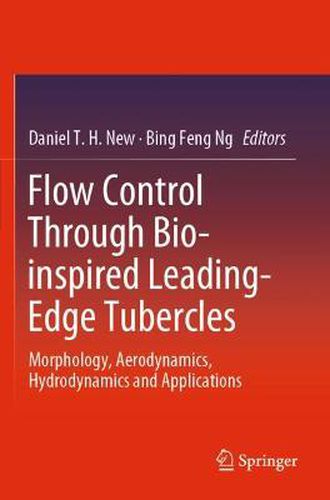Readings Newsletter
Become a Readings Member to make your shopping experience even easier.
Sign in or sign up for free!
You’re not far away from qualifying for FREE standard shipping within Australia
You’ve qualified for FREE standard shipping within Australia
The cart is loading…






This title is printed to order. This book may have been self-published. If so, we cannot guarantee the quality of the content. In the main most books will have gone through the editing process however some may not. We therefore suggest that you be aware of this before ordering this book. If in doubt check either the author or publisher’s details as we are unable to accept any returns unless they are faulty. Please contact us if you have any questions.
This book describes and explains the basis of bio-inspired, leading-edge tubercles based on humpback whale flippers as passive but effective flow control devices, as well as providing a comprehensive practical guide in their applications. It first discusses the morphology of the humpback whale flipper from a biological perspective, before presenting detailed experimental and numerical findings from past investigations by various experts on the benefits of leading-edge tubercles and their engineering implementations.
Leading-edge tubercle designs and functions have attracted considerable interest from researchers in terms of understanding their role in the underwater agility of these whales, and to exploit their flow dynamics in the development of new and novel engineering solutions. Extensive research over the past recent years has demonstrated that the maneuverability of these whales is at least in part due to the leading-edge tubercles acting as passive flow control devices to delay stall and increase lift in the post-stall regime. In addition to the inherent benefits in terms of aerodynamics and hydrodynamics, investigations into leading-edge tubercles have also broadened into areas of noise attenuation, stability and industrial applications.
This book touches upon these areas, with an emphasis upon the effects of lifting-surface types, flow regimes, tubercle geometries, lifting-surface stability and potential industrial applications, among others. As such, it features contributions from key experts in the fields of biology, physics and engineering who have conducted significant studies into understanding the various aspects of leading-edge tubercles. Given the broad coverage and in-depth analysis, this book will benefit academic researchers, practicing engineers and graduate students interested in tapping into such a unique but highly functional flow control strategy.
$9.00 standard shipping within Australia
FREE standard shipping within Australia for orders over $100.00
Express & International shipping calculated at checkout
This title is printed to order. This book may have been self-published. If so, we cannot guarantee the quality of the content. In the main most books will have gone through the editing process however some may not. We therefore suggest that you be aware of this before ordering this book. If in doubt check either the author or publisher’s details as we are unable to accept any returns unless they are faulty. Please contact us if you have any questions.
This book describes and explains the basis of bio-inspired, leading-edge tubercles based on humpback whale flippers as passive but effective flow control devices, as well as providing a comprehensive practical guide in their applications. It first discusses the morphology of the humpback whale flipper from a biological perspective, before presenting detailed experimental and numerical findings from past investigations by various experts on the benefits of leading-edge tubercles and their engineering implementations.
Leading-edge tubercle designs and functions have attracted considerable interest from researchers in terms of understanding their role in the underwater agility of these whales, and to exploit their flow dynamics in the development of new and novel engineering solutions. Extensive research over the past recent years has demonstrated that the maneuverability of these whales is at least in part due to the leading-edge tubercles acting as passive flow control devices to delay stall and increase lift in the post-stall regime. In addition to the inherent benefits in terms of aerodynamics and hydrodynamics, investigations into leading-edge tubercles have also broadened into areas of noise attenuation, stability and industrial applications.
This book touches upon these areas, with an emphasis upon the effects of lifting-surface types, flow regimes, tubercle geometries, lifting-surface stability and potential industrial applications, among others. As such, it features contributions from key experts in the fields of biology, physics and engineering who have conducted significant studies into understanding the various aspects of leading-edge tubercles. Given the broad coverage and in-depth analysis, this book will benefit academic researchers, practicing engineers and graduate students interested in tapping into such a unique but highly functional flow control strategy.